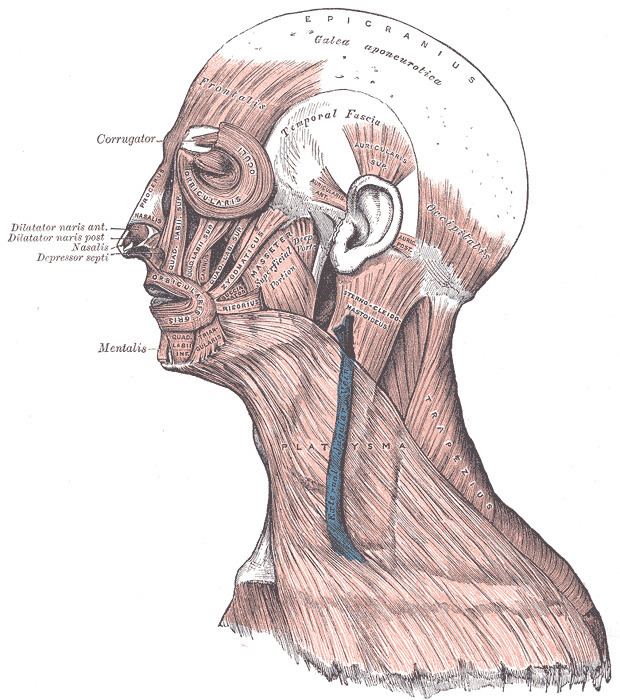Origin Auriculares muscles Dorlands/Elsevier m_22/12551078 | Insertion galea aponeurotica TA A04.1.03.006 | |
 | ||
Nerve temporal branches of the facial nerve Latin musculus temporoparietalis | ||
The Temporoparietalis muscle is a distinct muscle above the Auricularis superior.
Contents
Etymology
In English, this muscle’s name is the part of the muscle upon the skull on the time wall. Epicranius come from the Greek epi meaning “upon” and kranion meaning “head, or skull.” The temporoparietal part of this muscle derives its name from the Latin tempus meaning “time,” and the Latin paries meaning “wall.” The muscle covers the parietal bone, which forms the lateral wall of the cranium. It also covers the temporal bone, or time bone, which received its name because the hair of the head covering this bone is often the first hair to turn gray during the aging process. Therefore, this region is the first to show the ravages of time.
Action
The temporoparietalis muscle controls ear elevation. Assists the frontal belly in drawing the epicranial aponeurosis towards the front of the cranium. Tenses the fascia over the temporal region of the cranium and possibly assist the anterior and superior auricular muscles with movements of the auricle.
Muscle Group
The occipitofrontalis and temporoparietalis are sometimes grouped together as the epicranius muscle. The muscles of the scalp are superficial fascial muscles.
